What Is a Grade Beam?
Important Point
- A grade beam is a component of a building’s foundation. It consists of a reinforced concrete beam that transmits the load from a bearing wall into spaced foundations such as pile caps or caissons.
- The grade beam is a component of the foundation of the structure. The construction of the grade beam is done with the reinforced cement concrete.
- The Grade Beam is generally constructed on the Grade level or earth level. These beams are constructed to act as a horizontal bond between footings for pile caps.
- The main function of the grade beam is to transfer the load coming from the superstructure to the foundation. The Grade beam helps to control the differential settlement.
- The grade beam also supports the wall loads at the ground floor which tend to be heavy and cannot be supported by the slab only. In this article, you will get to know what is a Grade Beam, its Advantages and disadvantages and the Grade beam Construction Process
- Grade Beams are Constructed and designed with concrete and mainly acts as horizontal ties between the two footings.
- The grade beam is generally used in the areas where the surface bearing capacity of the soil is less. Grade beam connects the column with each other.
- The Grade Beam generally rests on the soil or above the soil which spans between piles.
- Grade beams are reinforced with the reinforcement in a continuous manner. The grade beams are generally used to connect the column foundations with each other.
- Grade beam should be reinforced with the continuous reinforcement which is developed within the supported column.
Also, Read: What Is Lintel Beam | Lintel Beam Size | Types of Lintel Beam
Useful Article For You
- What Is Bod
- What Is Rock
- What Is Sand
- What Is MDF
- What Is Grout
- What Is Rebar
- What Is Bridge
- What Is a Soffit
- What Is Mortar
- What Is Tender
- What Is Stucco
- What Are Pavers
- What Is Tension
- What Is Asphalt
- What Is Drywall
- What Is a Column
- What Is a Parapet
- What Are Lumens
- What Is a Scaffold
- What Is Hard Hat
- Cellar Vs Basement
- What Is Hempcrete
- What Is Tpo Roofing
- What Is a Mezzanine
- What Is Precipitation
- What Is a Foundation
- What Is Acacia Wood
- What Is the Rock Cycle
- What Is a Window Sash
- What Does Gis Stand for
- What Is Cement Made of
- What Size Is a Queen Bed
- What Is Concrete Made of
- What Is Formwork Failure
- Cantilever Bridge Description
- What Is Self-Compact Concrete
- What Color Light Helps You Sleep
- What to Look While Buying Best Door Locks for Your Next Home
What Is Grade Beam Foundation?
- The main purpose of using a grade beam Foundation is to transfer all load coming from structure to the underground soil Strata.
- The size and the depth of the grade beam depend upon the type and the intensity of the load coming on the beam and the bearing capacity of the soil on the construction site.
- The minimum depth of the grade beam should be 150 mm. The grade beams are stronger than the plinth beams. Grade beam also carries the load of the walls.
- Grade beam Foundation uses less amount of concrete as compared to the conventional Foundation. One of the disadvantages of the construction of the grade beam foundation is that it cannot be used for the basement.
- The minimum reinforcement which is required in the grade beam at the top and the bottom side is 3 bars of 10 mm diameter.
Also, Read: H-Beam vs I-Beam | What Is H-Beam | What is I-Beam
Grade Beam Construction Process
The steps which are involved in the construction process of the grade beams are as follows. Here we are listed step by step procedure for the construction of the grade Beams.
- Preparation and excavation for grade beam.
- Installation of formwork for grade beam.
- Reinforcement placement for grade beam.
- Pouring concrete for grade beam.
1. Preparation and Excavation for Grade Beam
- The first step on the excavation is done for the construction of the grade beams. The excavation for the grade beam is done based on its level.
- The construction of the grade beam is done on the prepared base surface. The ground surface should be levelled and prepared with plain cement concrete to rest grade beam.
- If the grade beam is used to connect between two piles then the Construction of the grade beam will begin after the Construction of pile foundation.
Also, Reda: What Is Inverted Beam | Advantages of Inverted Beam | Purpose of Inverted Beam
2. Installation of Formwork for Grade Beam
- After completing the process of excavation the formwork for the construction of grade beams is installed.
- The formwork for the grade beam was installed as per the measurements for the construction of the grade beam which is provided in the drawing.
- If the construction of the grade beam is done on the surface of the ground then the bottom of the formwork should be replaced prior on both sides.
- The cage of the reinforcement should be placed on the flat soling brick before the shuttering is fixed.
- If the grade beam is constructed above the ground level then the formwork should be similar to that conventional beam. In this condition, the shutter should be placed for the bottom and both sides of the grade beam.
- After the installation of the formwork for the construction of the grade beam ensure that all dimensions which are provided are according to the drawing.
- Check that whether sufficient reinforcement cover is provided or not. It is also necessary to check the shuttering strength, waterproof and verticality of the shutters.
3. Reinforcement Placement for the Grade Beam
- After the completion of the formwork, the reinforcement placement for the grade beam is done. The Reinforcement of the Grade Beam should be properly placed.
- The reinforcement detailing is provided in the structural drawings. The details which structural drawings consists are size and number of the longitudinal reinforcement bar
- After the placement of reinforcement, the number of bars and the size of the top and bottom bar should be checked properly as per the Structural drawing.
Also, Read: What Is Slab Beam / Hidden Beam / Concealed Beam | Advantage and Disadvantage
4. Pouring of Concrete for Grade Beam
- The casting of the grade beam is done with the help of ready mix concrete for onsite machine mixed concrete.
- While casting the care should be taken that concrete should be properly compacted. The top surface of the grade beam should be properly finished.
- Finally, the side of the grade beam should be removed after the 24 hours. The bottom shutter cannot be removed until the concrete can the strength.
Also, Read: Difference Between Beam and Column | What Is Beam | What Is Column
Useful Article for You
- Zero Force Members
- How Much Does a Yard of Concrete Weigh
- Cmu Wall Meaning
- Skeleton Steel Framing
- Gradient Road
- Budget Sunroom Ideas
- What Is Gypsum Board
- Types of Vaulted Ceilings
- How Does Baking Soda Remove Blood from Carpet
- What Are Forms in Construction
- How Heavy Is Dirt
- Tender Meaning in Architecture
- Dark Olive Green House
- Cast in Place Concrete
- Lean to Roof
- How Tall Is an Average Door
- Window Sill Height
- Concrete Cold Joint
- Types of Traps
- Types of Pipe
- Wood Supporting Beams
- Finishing Plaster
- Home Depot Scrap Wood
- Lvl Beam Size Calculator
- Structural Shell
- Curb Types
- Msand
- Optimum Dry Meaning
- Disadvantages of Low-E Glass
- Bridge Abutment Definition
- Build Materials List
- Composite Masonry Wall
- Is Cedar a Hardwood or Softwood
- Modified Proctor Test
- Physical Properties of Sand
- Crane Machine Construction
- Types of Gable Roofs
- Door Frame Types
- How Much Does 55 Gallons of Oil Weigh
- Dog Leg Stairs
- Concrete Salt Finish
- Westpoint Bridge Builders
- Types of Porches
- Hempcrete Disadvantages
- Roof Pitch Types
- Types of Weirs
- Asphalt Floor
- Dutch Roof
- #6 Rebar Weight Per Foot
- Prizmatic Compass
- Bond Break Concrete
- Poured Concrete Wall Cost Calculator
- How Many 60 Lb Bags of Concrete in a Yard
- Wood Fence Post Spacing Chart
- Falsework
- Design of Building Structures
- Topping Slab
- Types of Cinder Blocks
- Fresh Concrete
- Door Colors for Red Brick House
- Clear Cover Concrete
- Tiles Brand
- Cement Consumption in Plaster
- Weight of Concrete Slab Calculator
- Is Clay Smaller Than Silt
- How to Calculate Dead Load
- Bad Concrete Work
- Stepped Foundations
- Residential Construction Cost Estimator Excel
- Different Construction Trucks
- Septic Pump Replacement Cost
- Dead Load Calculator
- Beam Vs Column
- Concrete Mix Ratio
- Caisson Foundation
- Glulam Beam Weight Calculator
- Bituminous Pavement
- M30 Mix Ratio
- Is 2502
- Reinforced Brick Work
- Plinth Level
- Trapezoidal Footing Formula
- Slab Steel Calculation
- Rolling Margin of Steel
- Top 20 Pvc Pipe Brands in India
- Top 5 Cement in India
- How Much Weight Can a 6×6 Support Horizontally
- Types of Curtains
- Building Estimate Excel Sheet
- How Is the Skeleton Similar to the Frame of a House?
- Which of the Following Best Explains Why Buildings Tip During Earthquakes?
- Rate Analysis of Civil Works
- Water Tank Company Name
- 1 Soot in Mm
- Reinforcement Lap Length Table
- Well Point
- Plastering Ratio
- Rcc Value Day
- How Many Brick in a Cube
- Dubai Construction Company
- Steel Metal Price Per Kg
- Bathroom Fittings Company
- Coarse Sand Density
- Symbol for First Angle Projection
- Control Lines Construction
- Steam Roller Weight
Advantages of Grade Beam
- Grade beam can be easily formed in different shapes and sizes.
- Grade beam provides excellent support for both concrete as well as soil. They can support the soil.
- The installation of the grade required less excavation.
- The construction of the grade beam required less amount of concrete as compared to conventional Foundation.
- This will help to reduce the cost of the project.
- The Grade beam will save time and money and required less amount of money.
- The grade beams allow the entry of other materials such as rebar, conduit pipes and dowels etc
Disadvantages of Grade Beam
- To construct the foundation of the grade beam it required a levelled construction site.
- Grade beam Foundation does not work with the basement.
- The construction of the grade beam Foundation cannot be done on the hilly areas.
- The construction of the grade beam on the slope areas required a larger amount of excavation which will increase the cost of the project.
Grade Beam Construction
Grade beams, also known as footing beams or reinforced concrete beams, are structural elements used in construction to provide support and stability to a building or structure. They are typically used to distribute the load of a structure evenly to the underlying soil or foundation.
Grade Beam Design
Grade beams are commonly concrete beams which are designed to act as horizontal ties between footings or pile caps. They should be reinforced with continuous reinforcement that is developed within or beyond the supported column, or be anchored within the pile cap or footings as per ACI 318-14.
Grade Beam Vs. Spread Footing
Grade beams and spread footings are both types of foundation elements used in construction to support and distribute the load of a structure to the underlying soil. While they serve similar purposes, there are some key differences between grade beams and spread footings. Here’s a comparison:
Grade Beams:
- Definition: Grade beams are reinforced concrete beams that are constructed at or below ground level to support and distribute the load of a structure.
- Placement: Grade beams are typically placed at a shallow depth, near the ground surface, and they may be directly connected to column footings or isolated footings.
- Purpose: Grade beams are primarily used to transfer the load from columns, walls, or other vertical members to the underlying soil or foundation.
- Load Distribution: Grade beams are designed to distribute the load evenly along their length, thereby reducing the pressure exerted on the soil.
- Reinforcement: Grade beams are reinforced with steel bars to enhance their strength and resistance to bending or cracking.
Spread Footings:
- Definition: Spread footings, also known as pad footings, are concrete footings that are wider in plan dimensions compared to the supported column or wall they serve.
- Placement: Spread footings are typically located at the base of columns or walls and are placed at a greater depth compared to grade beams.
- Purpose: Spread footings are used to transmit the load from columns or walls to a larger area of soil or rock beneath. They distribute the load over a wider area to prevent excessive settlement or bearing capacity failure.
- Load Distribution: Spread footings distribute the load through the bearing pressure exerted on the soil directly beneath the footing.
- Reinforcement: Spread footings may or may not contain reinforcement, depending on the design requirements and the soil conditions.
Grade Beam Foundation Cost
The national average for pier and beam foundation per square foot is $7 to $11 square feet.
Grade Beam Reinforcement Details
Grade beams are typically reinforced with steel bars to enhance their strength and resistance to bending or cracking. The reinforcement details for grade beams may vary depending on the specific design requirements and the structural loads they need to support. However, here are some common reinforcement details for grade beams:
- Reinforcement Bars (Rebars): Grade beams are reinforced with steel rebars that provide tensile strength to resist bending and cracking. The rebars used are typically deformed bars (commonly known as rebar) and are specified by their diameter and grade (e.g., #4 rebar, Grade 60).
- Bottom Reinforcement: Grade beams usually have a layer of reinforcement bars placed at the bottom. The spacing and size of these bars are determined by the design specifications and the expected loads. The bars are often placed parallel to the length of the grade beam and are supported by chairs or other means to maintain the required cover from the bottom surface.
- Top Reinforcement: In some cases, additional reinforcement bars may be provided at the top of the grade beam to enhance its bending resistance. This top reinforcement can help in preventing cracking and increasing the load-carrying capacity of the grade beam.
Grade Beam Vs Plinth Beam
Grade beams are stronger than the plinth beams. Grade beam utilizes less amount of concrete as compared to the standard beams.
Concrete Grade Beam
A Concrete Grade Beam, also known as a footing beam or reinforced concrete beam, is a structural element made of concrete that is used to support and distribute the load of a building or structure. It is typically constructed at or below ground level and designed to transfer loads from columns, walls, or other vertical members to the underlying soil or foundation.
What Is a Grade Beam?
A grade beam, also known as a footing beam or reinforced concrete beam, is a structural element used in construction to provide support and stability to a building or structure. It is a horizontal beam that is typically constructed at or below ground level and designed to distribute the load from columns, walls, or other vertical members to the underlying soil or foundation.
What Is a Grade Beam in Construction?
Grade beams are used to connect column foundations together, whether the columns are supported on individual spread footings, individual piles, or pile groups. Trenches in the soil will act as forms for reinforced concrete grade beams. Wood forms are only needed for the above ground portions of the grade beam.
What Is a Grade Beam Foundation?
A grade beam foundation, also known as a footing beam foundation, is a type of shallow foundation system used to support and distribute the load of a building or structure. It consists of reinforced concrete beams that are constructed at or slightly below ground level. Grade beam foundations are commonly used in areas with stable soil conditions and relatively light structural loads.
Like this post? Share it with your friends!
Suggested Read –
- Bond Beam Vs Lintel
- Pile Caps Construction
- Nail Vs Screw | What Are Nail | What Is Screw
- Step by Step Process of Building Construction PDF
- Difference Between CPM and PERT | What Is CPM & PERT
- Top 10 Companies for Environmental Engineers to Work For
- Difference Between One Way Slab and Two Way Slab | What is Slab
- How is Concrete Made | What is Concrete | Components of Concrete | How to Mix Concrete
- What Is Roller Compacted Concrete | Advantages & Disadvantages Roller Compacted Concrete
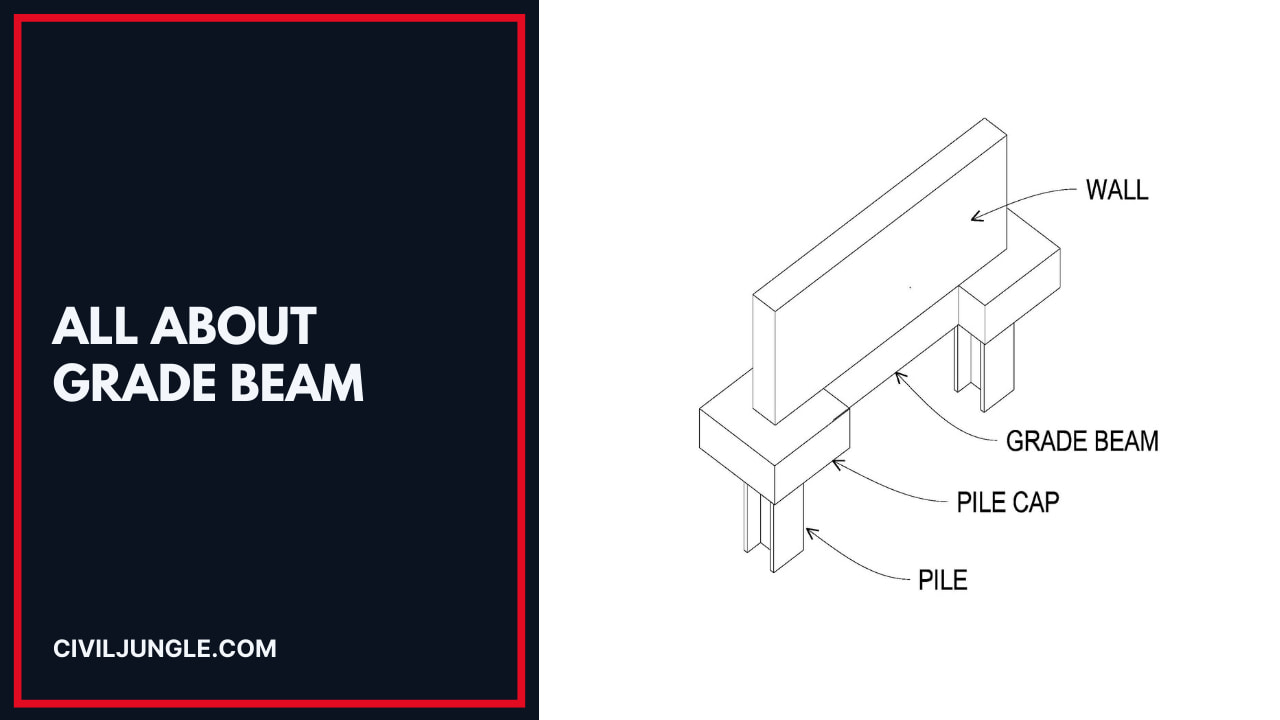
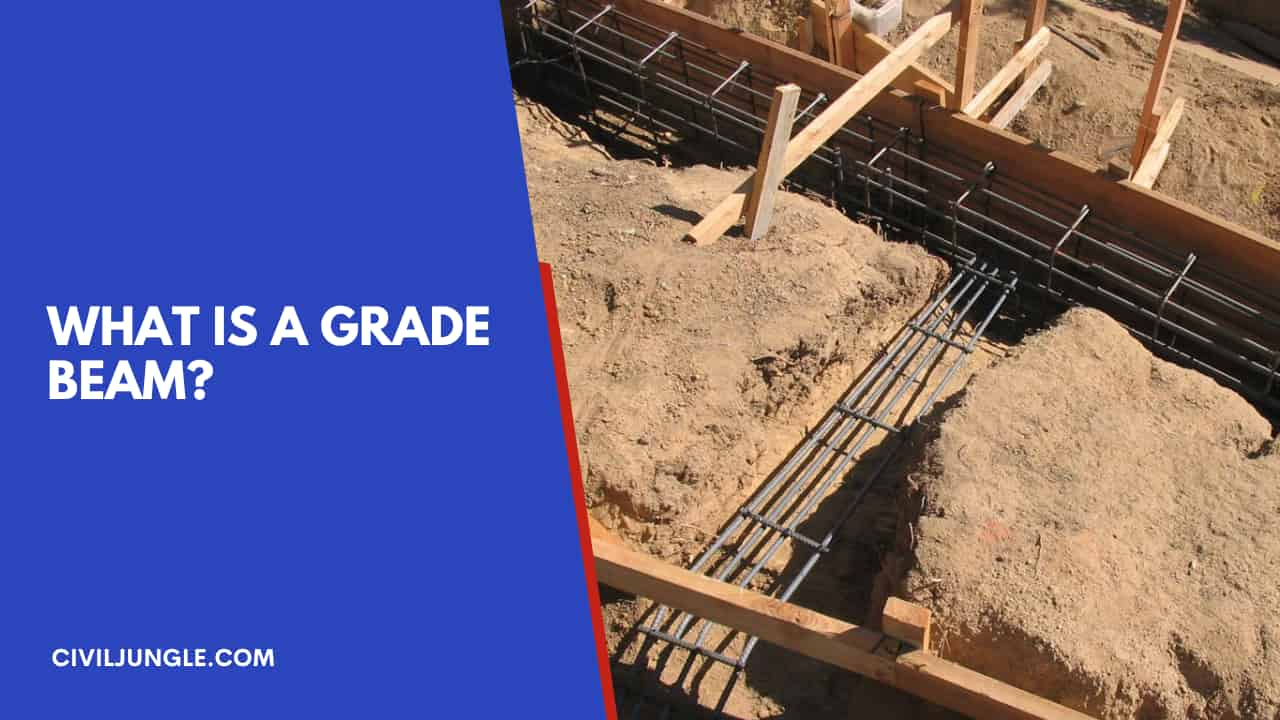
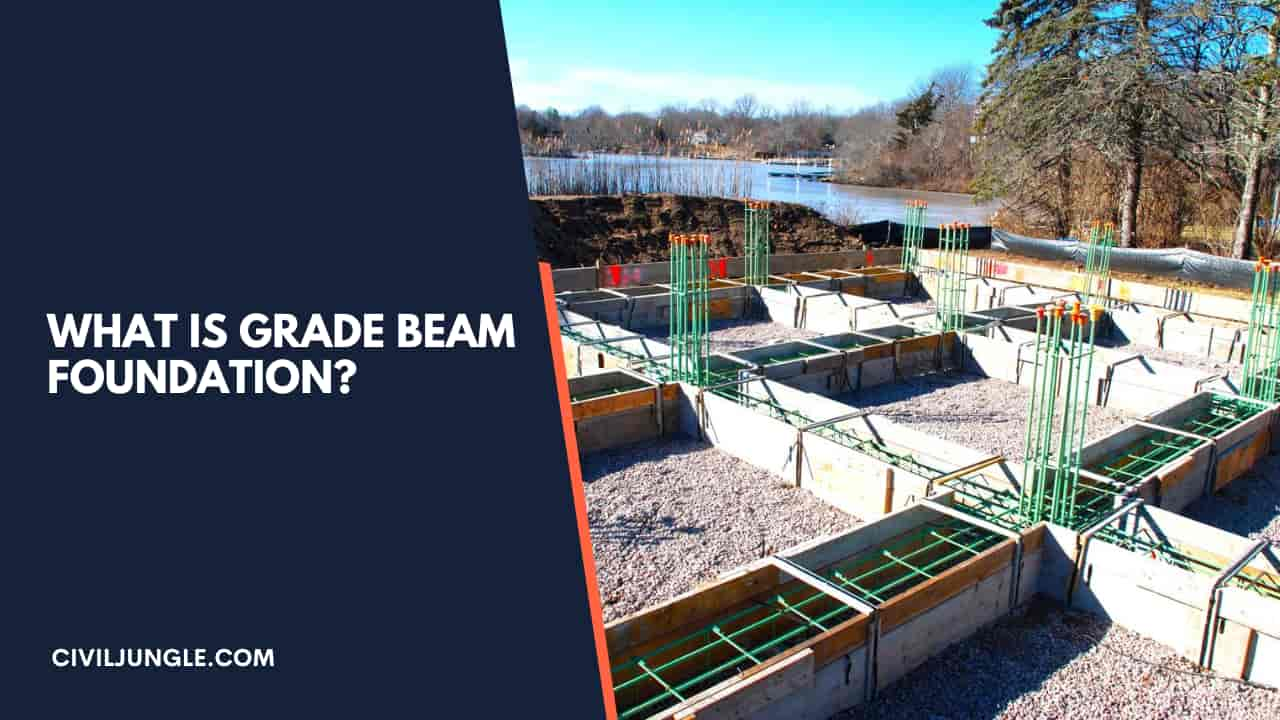
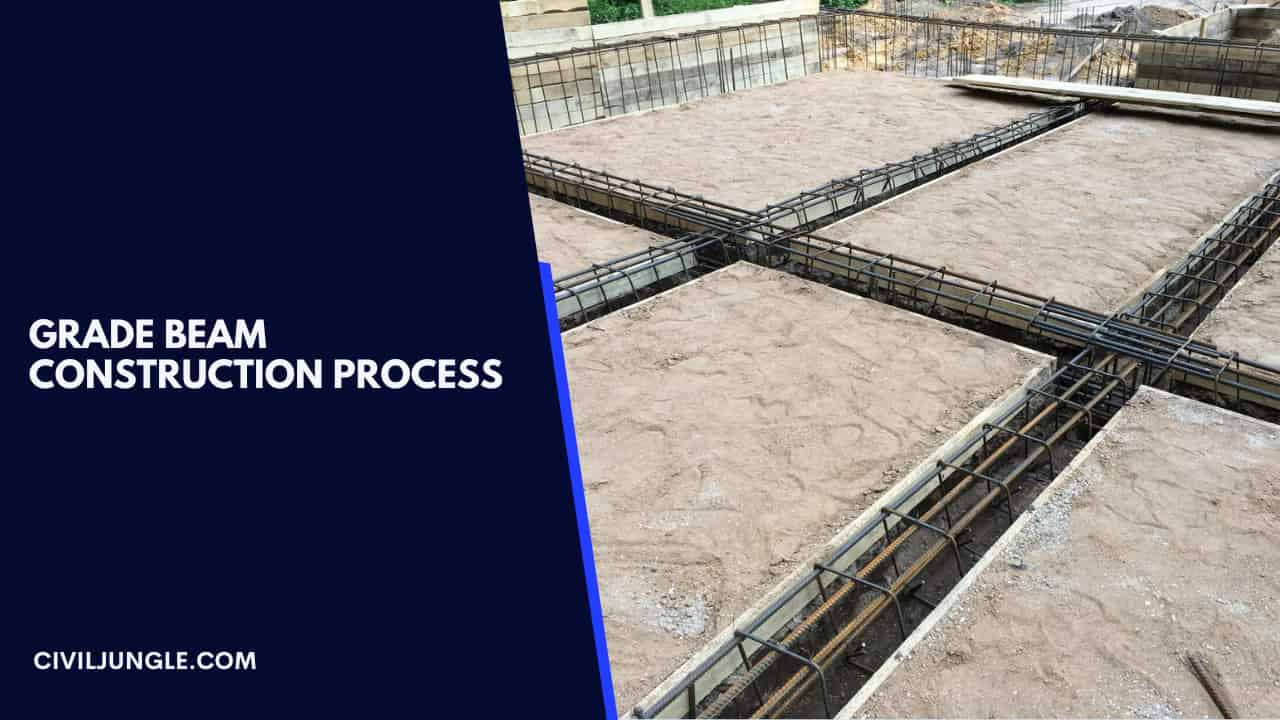
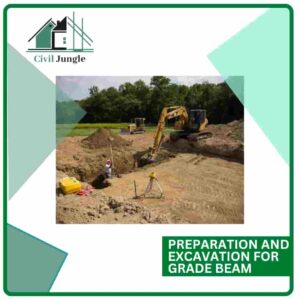
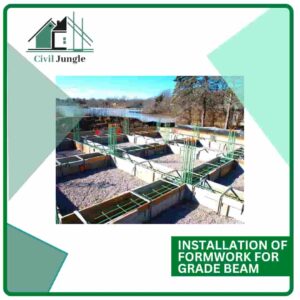
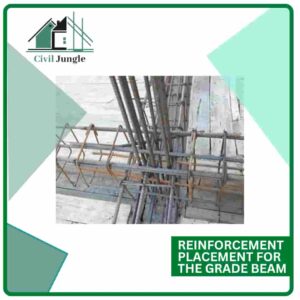
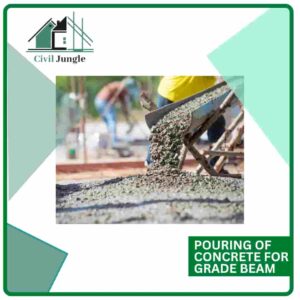
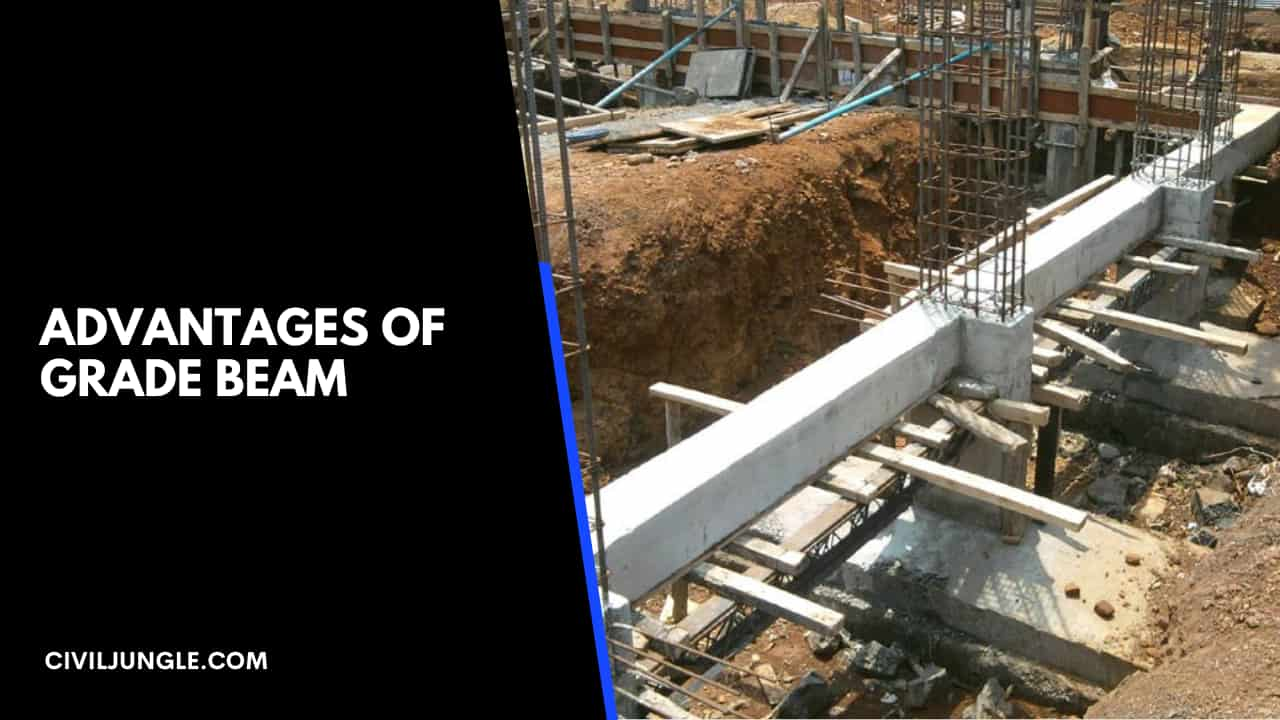
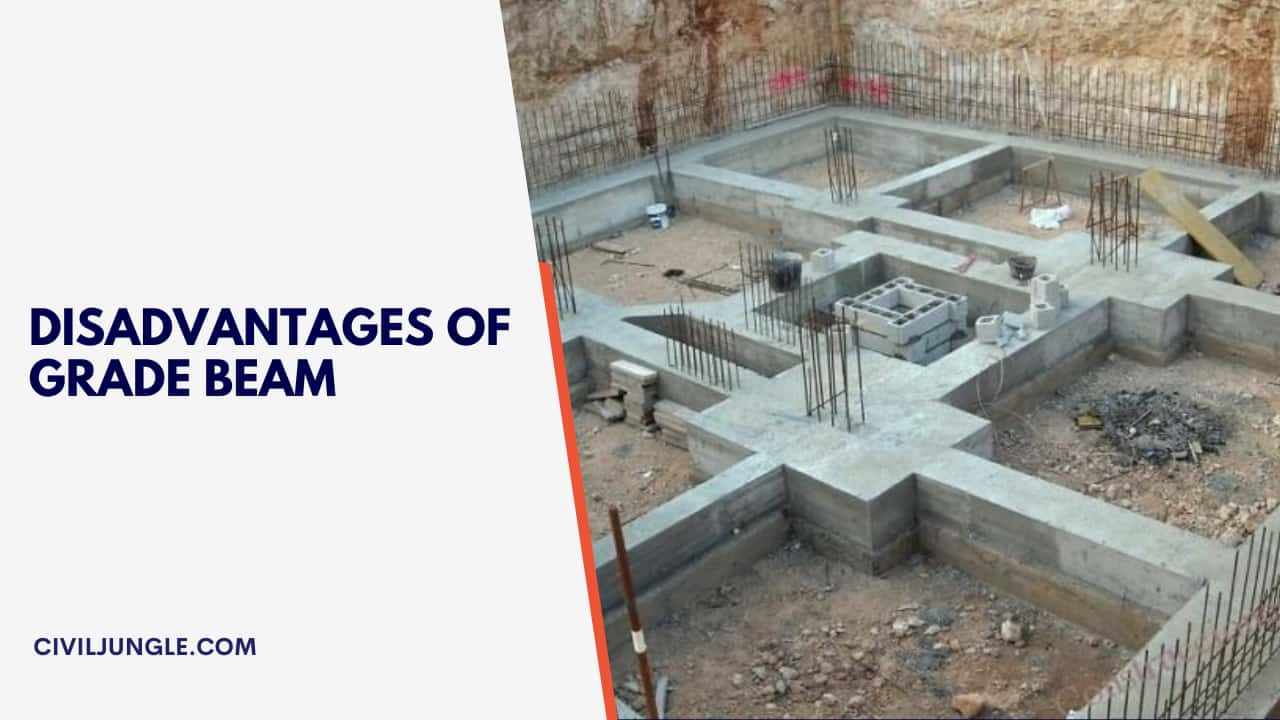

I live in a 50 year old house with grade beams on a slope, so it’s not true that they can’t be built on a slope.
In the field where it’s a hill side the grade beam can be installed in steps every 2′ up or (down)
cannot be sloped , unacceptable, , as far as we were instructed.